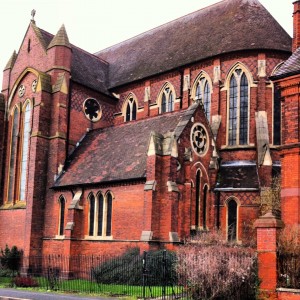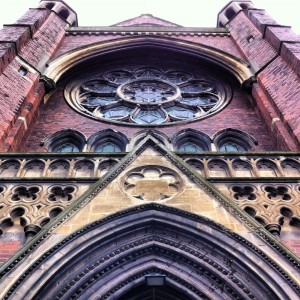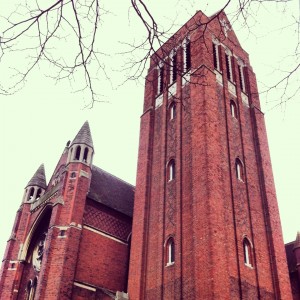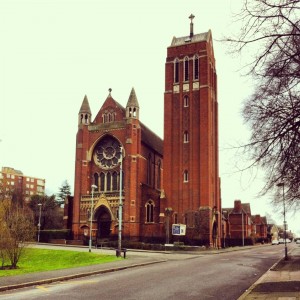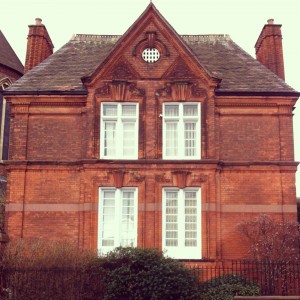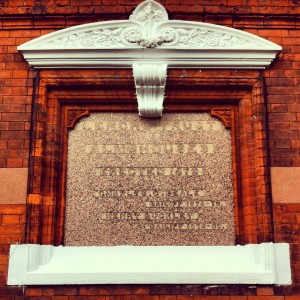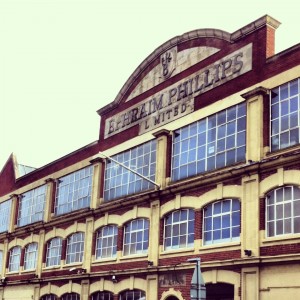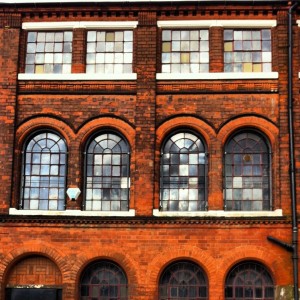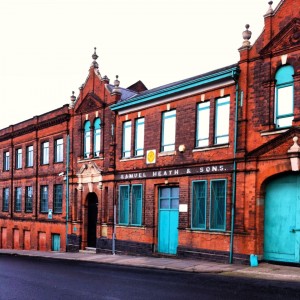A wander through Highgate
For reasons too dull to recount here, a couple of Saturdays ago, I took quite a long walk to St Andrews through Highgate. Although I know surrounding areas pretty well, and I often see the imposing tower of St Alban’s Church popping up from a distance, I walked down a few streets I’d never seen before and was pleasantly surprised by what I came across. The area was comprehensively redeveloped in the 1960s to an even greater extent than neighbouring Bordesley, and pretty much all of what would have been tightly packed streets of terraced housing have been cleared. However, the City Council’s Big City Plan foresees “the potential to transform Highgate and surrounding areas to provide a much improved family neighbourhood”. There are quite a few surviving old buildings that give the area plenty of character to build on.
The Grade II* listed St Alban the Martyr church (1879-81), on the corner of Conybere Street and Stanhope Street, is a late work by renowned Gothic Revival church architect JL Pearson. It looks like a small cathedral, and was deliberately intended to be so. Pearson’s original spire, never completed, would have dominated the surrounding terraced streets to draw attention to the work of the Anglo-Catholic missionaries the Pollock brothers, who founded the church. The existing tower was eventually added in the 1930s by Arts and Crafts architect EF Reynolds. The English Heritage listing describes the tower as ‘unsympathetic’, but personally I quite like the contrast.
The earlier years of the Pollocks’ mission were not without problems, as the original building in Leopold Street was attacked during the 1867 ‘Murphy Riots’, stirred up by the anti-Catholic rhetoric of William Murphy. The church’s website has lots of detail on the history of the building, and information on how to donate to its campaign to raise up to £1.6 million for restoration. You can also follow them on Twitter.
Next door is the shiny new St Albans Academy, which can also trace its history back to the mission. On the other side of the church are the Lench’s Trust almshouses (1879), designed by local architect JA Chatwin in a Birmingham Gothic style and Grade II listed. Where Gooch Street crosses the River Rea a bridge, with public art by Steve Field, marks the spot where “an Anglian tribe led by Beorma founded Birmingham” (Beorma Ingas Ham – the home of the people of Birmingham).
There are also some good old industrial buildings, like Ephraim Phillips building in Bissell Street, and several along Leopold Street. These include the Cobden Works of Samuel Heath & Sons, a brass founder dating back to 1820, which now specialises in high end bathroom fittings and architectural hardware. I love the idea that everything in their showroom at the Design Centre at Chelsea Harbour is made here in quite an obscure part of Brum.
Around Highgate Park are a number of historic builings. Most interestingly, Stratford House is a timber framed manor house dated 1601 and built for Ambrose and Bridget Rotton (presumably of Rotton Park fame). It hangs tenaciously on, having been reprieved from demolition twice – the first time in the 1840s when the London Midland and Scottish railway purchased it in connection with the Camp Hill goods yard, and again in the 1950s – and shows off Manzoni’s Middle Ring Road at its daftest. It now effectively stands in a traffic junction and does not appear to be occupied.
From here I’m back into more familiar territory as I head down Bradford Street, over Deritend and down Heath Mill Lane and Great Barr Street, and onto the Sportsman to meet my dad for a pint. Things took a turn for the worse at this point as we got caught in a hail storm and Blues lost 2-1 to league leaders Leicester, but at least I got to see another small slice of Brum’s heritage.


